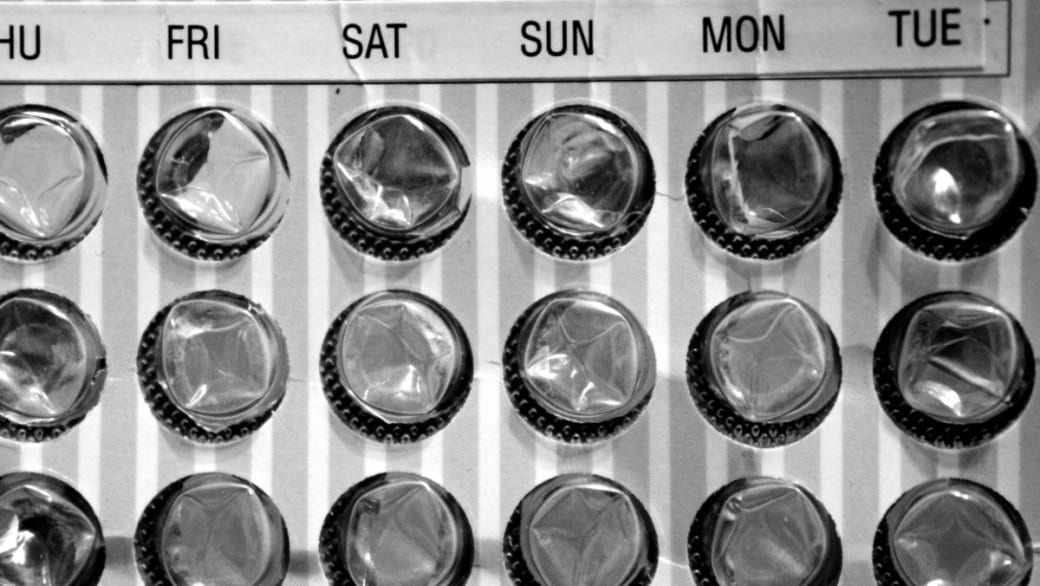When I started taking PrEP, my doctor warned that Truvada is a lot like birth control in that it doesn’t protect against other sexually transmitted infections (STIs). He recommended that I still continue to use condoms whenever possible.
This was the first that I’d heard of Truvada being compared to the birth control pill, but as I spoke to some straight female friends, I realized that there were far more similarities between the two than I could’ve imagined.
In the US, the birth control pill was approved more than 50 years prior to Truvada so it made me think — what can we learn about the way it was received by society that may apply to PrEP today?
The world’s first commercially-produced birth control pill was approved by The Food and Drug Administration (FDA) in 1960 for contraceptive use. By 1962, there were 1.2 million American women using the pill and a year later, that number doubled to 2.3 million.
Rather than celebrating this innovation, it became somewhat scandalous; it was blamed for the sexual revolution because it allowed women to enjoy sex without the fear of pregnancy (as if that was a bad thing). It was unthinkable to some that women, like men, actually enjoyed sex and had sexual needs.
With the risk of pregnancy out of the way, social conservatives saw this sexual revolution was an open invitation for women to become promiscuous. Sound familiar?
Flash forward to Nov 12, 2012, when journalist David Duran published an article in the Huffington Post called, “Truvada Whores?” months after the FDA approved the use of Truvada as PrEP in the United States. He wrote:
“So is PrEP actually helping reduce the spread of HIV, or is it just opening the doors for others to engage in risky behavior? Again, this potentially works for committed couples, sex workers or drug addicts who remember to take the pill daily, but for gay men who just like bareback sex, Truvada is just an excuse to do what they want to do.”
To paraphrase: How dare gay men enjoy natural sex, carefree?
Duran retracted some of these opinions two years later in a more compassionate piece titled, “An Evolved Opinion on Truvada,” but the online backlash persisted. It ultimately lead to the #TruvadaWhore movement, which was a tongue-in-cheek take on the title of his original piece. And it became a sexual revolution in its own right.
#TruvadaWhore was started by Adam Zeboski, who didn’t have much patience for the slut-shaming, particularly after spending his adolescent years in the Catholic school system, where abstinence was the answer to sexual education.
He soon started selling blue T-shirts (the same colour as the pill) with the #TruvadaWhore hashtag on them. He felt that everyone deserved to be protected from getting HIV, not just those in serodiscordant relationships. The #TruvadaWhore T-shirts were an empowering way to reclaim a disparaging term, and the hashtag itself helped people find out more about PrEP through social media. Zeboski was even interviewed and featured on the front page of the New York Times.
On #PrEP for 28 months now. Still a #TruvadaWhore. #Truvada #DailyBlue #PrEPworks #TruvadaWarrior @HRC pic.twitter.com/J7YGuwbRZx
— pup bones (@pupbones) February 25, 2015
Adam Zeboski, founder of the #TruvadaWhore movement.
As Zeboski experienced in his early life, the Catholic Church has been responsible for creating sexual shame for ages, particularly when it came to the birth control pill. By 1968, Pope Paul VI reemphasized that it was wrong to use contraception to prevent new human life, claiming that it was a deliberate violation of a so-called “natural law.”
The Catholic Church didn’t stop there. During the AIDS epidemic, some people within religious circles tried to shame the victims. They claimed that the crisis wouldn’t have happened had people abided by the church’s teachings that the only way to have sexual intercourse was in heterosexual, marital relationships for procreative purposes. So what effect do these sort of sentiments have on gay men today when thinking about PrEP?
Despite everything we know about PrEP from scientific studies, there are still false misconceptions floating around.
Let’s recap: We know that PreP works at preventing the transmission of HIV by 99 percent with full adherence. No serious side effects have been observed, though in very rare instances there could be liver and kidney damage.
Yes, it can be said that people may use condoms less, though it has not been proven. Besides, only 16 percent of men who have sex with men reported consistent condom use anyway, which may help to explain why 44,073 people were diagnosed with HIV in 2014 in the US. That’s 44,073 cases that could’ve been prevented, since PrEP had already been approved for two years by then. And yes, they don’t protect against STIs, but those were on the rise well before PrEP, as previously explored.
So do these moral judgments-turned-misconceptions come from the same moral system pushed by organizations like the Catholic Church that, for decades, shamed women for using contraception and condemned HIV-positive men while banning condom use? Did this create a sort of self-loathing and shame when it comes to homosexuality and sex? So much so that men feel that they can’t have natural, carefree sex without consequence, despite hard facts?
Personally, I believe that’s exactly what happened, which is why there’s so much stigma surrounding PrEP. And when I think of what we can learn from looking at the history of the birth control pill, religious and conservative institutions are responsible for much of the sexual shame that prevents us from having safer, more responsible sex. And it occurs on a subconscious level for some, even 50 years later.
PrEP School runs every other Monday on Daily Xtra. Columnist Mike Miksche explores and navigates the world of sex and PrEP.

 Why you can trust Xtra
Why you can trust Xtra


